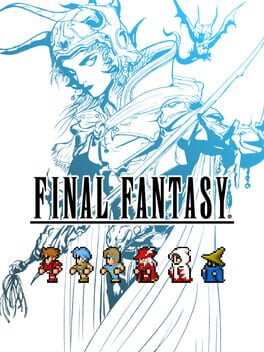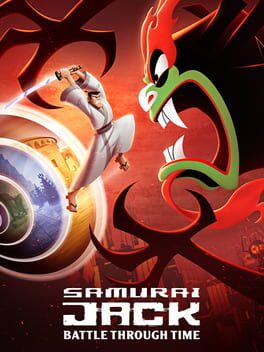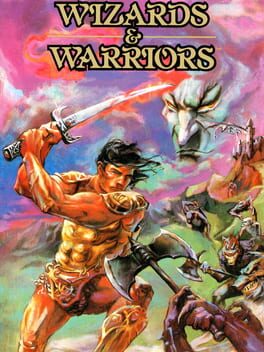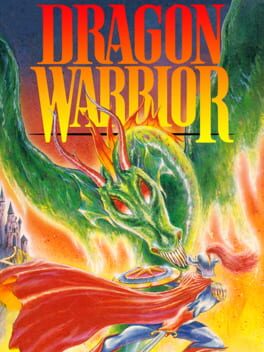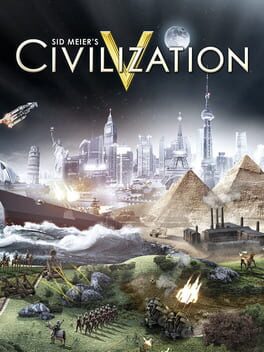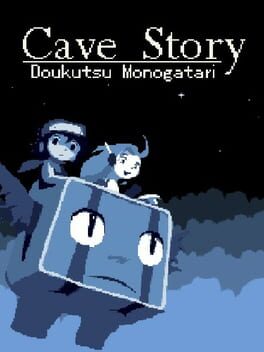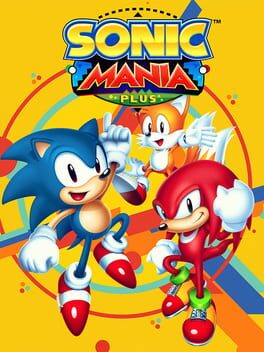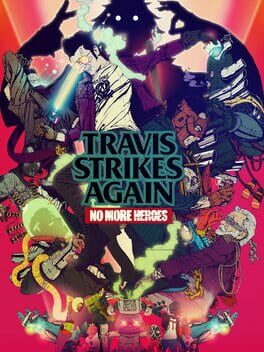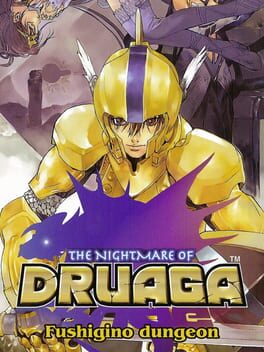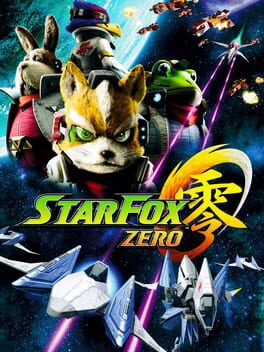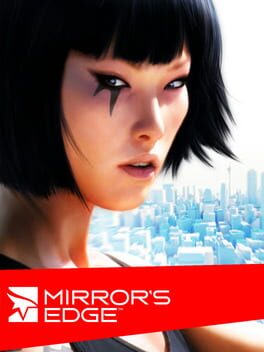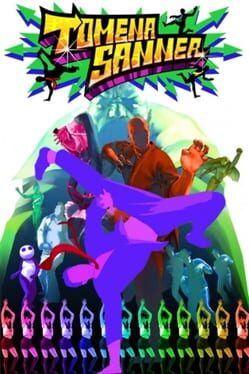2021
In 1987 Square released Final Fantasy for Famicom, a game that would commence a long going legacy on the entire industry. For the time being, it was pretty elegant on sound and customization options. Nowadays the characters are virtually blank and the plot is regarded as too pale compared to what later entries would become regarded as theatrical narratives.
Ready for the 35th anniversary, in collaboration with Tose, SquareEnix launched the "Pixel Remaster" series. A refinement of the first 6 games with fancy optional soundtrack arrangements and a visual overhaul with crafted special effects. In addition to that, they included what could be a very ballsy feature of toggling random encounters on and off at the players' whim, as well as allowing you to adjust the reward rate of battles up to a quadruple. These features can make the game's pace accelerate to a dramatic proportion that leads to potential controversy; for many players the very struggle of running through the brambles of monsters stopping you often through the way is part of the endurance test. In the case of the first Final Fantasy, I deem the inclusions of these to be a fascinating experiment to improve the quality of life of these traditional formats.
Time has not been too kind to the original FF1, the game has gone through at least 4 prior revisions on different platforms, and while they all usually went for just an audiovisual overhaul, the inclusion of these additional tweaks invites to experiment players to get their Warriors of Light so strong and overpowered that these can easily become about 30 levels above the expected quota. I found that by turning off encounters just to scout the area, while turning them back on to encounter new enemies + gather EXP it creates a far more relaxed environment that does not compromise the pace of the emotional impact of the story, this requires a sense of balanced moderation from the player.
Anyway, so THIS entry in particular? First time beating it. It's all right, I give it about the same respectful regard as Dragon Warrior 1, you got to be aware of what kind of content you are subscribing to. The Pixel Remaster version adds a slightly more cinematic sense, cutscenes have been squeezed in to feel slightly more fitting with the subsequent entries and not look like a stick in the mud. After playing through this version, I believe I still want to try playing a run of the NES release and test my patience.
If you are looking for a very basic quest that is not too character-driven, while being nicer on your eyes and ears, then this one is for you.
Ready for the 35th anniversary, in collaboration with Tose, SquareEnix launched the "Pixel Remaster" series. A refinement of the first 6 games with fancy optional soundtrack arrangements and a visual overhaul with crafted special effects. In addition to that, they included what could be a very ballsy feature of toggling random encounters on and off at the players' whim, as well as allowing you to adjust the reward rate of battles up to a quadruple. These features can make the game's pace accelerate to a dramatic proportion that leads to potential controversy; for many players the very struggle of running through the brambles of monsters stopping you often through the way is part of the endurance test. In the case of the first Final Fantasy, I deem the inclusions of these to be a fascinating experiment to improve the quality of life of these traditional formats.
Time has not been too kind to the original FF1, the game has gone through at least 4 prior revisions on different platforms, and while they all usually went for just an audiovisual overhaul, the inclusion of these additional tweaks invites to experiment players to get their Warriors of Light so strong and overpowered that these can easily become about 30 levels above the expected quota. I found that by turning off encounters just to scout the area, while turning them back on to encounter new enemies + gather EXP it creates a far more relaxed environment that does not compromise the pace of the emotional impact of the story, this requires a sense of balanced moderation from the player.
Anyway, so THIS entry in particular? First time beating it. It's all right, I give it about the same respectful regard as Dragon Warrior 1, you got to be aware of what kind of content you are subscribing to. The Pixel Remaster version adds a slightly more cinematic sense, cutscenes have been squeezed in to feel slightly more fitting with the subsequent entries and not look like a stick in the mud. After playing through this version, I believe I still want to try playing a run of the NES release and test my patience.
If you are looking for a very basic quest that is not too character-driven, while being nicer on your eyes and ears, then this one is for you.
At the turn of the century, Genndy Tartakovsky had already cemented his status as cartoon superstar with the megahit of Dexter's Laboratory and co-developing the incredibly profitable Powerpuff Girls. After these successful ventures, he wanted to explore daring territory, a show that would be suspenseful, full of visceral action, some dark themes, and still retaining a tasteful amount of comedy on the mix. That show would be Samurai Jack. Much like our titular hero, we warp towards the future, just about 20 years. Adult Swim would present a long waited final season to the show without the usual restraints of children's programming all while still keeping the signature style it is recognized for. And then a video game based on these events is announced.
Battle Through Time is a 3D action game with a style that is considerably similar to the likes of Devil May Cry, with a skill tree, many kinds of weapons to choose from, and without a combo system. Alas, it is unfortunate that the variety of enemies you fight in this adaptation is pretty scarce, and there are plenty of features that only feel kind of basic when compared to the likes of many predecessors of the past couple decades.
So is it a bad game? Not really, in fact I would say it's easily the best video game ever made under this license, to which unfortunately it might not be a bar too high to pass. This was developed by Soleil, a Japanese studio that does handle plenty of licensed titles as well. They did do a pretty good job with this title, alas I suppose it is not absolutely stellar.
It simply could be much better, it turned out just above okay, I suppose.
Battle Through Time is a 3D action game with a style that is considerably similar to the likes of Devil May Cry, with a skill tree, many kinds of weapons to choose from, and without a combo system. Alas, it is unfortunate that the variety of enemies you fight in this adaptation is pretty scarce, and there are plenty of features that only feel kind of basic when compared to the likes of many predecessors of the past couple decades.
So is it a bad game? Not really, in fact I would say it's easily the best video game ever made under this license, to which unfortunately it might not be a bar too high to pass. This was developed by Soleil, a Japanese studio that does handle plenty of licensed titles as well. They did do a pretty good job with this title, alas I suppose it is not absolutely stellar.
It simply could be much better, it turned out just above okay, I suppose.
1987
Rare is well known for being one of the most prevalent video game powerhouses that ever hailed from Europe for the NES. We are provided by them an action-adventure game that one might consider by its high-fantasy themes to be a very distant ancestor of the likes of Elder Scrolls or even the Legend-in-the-making of Zelda, however this is 1987 we are talking about here, and frankly the ambitions of what a video game could become were still highly experimental, so users would make-do with this release.
Is it good? It's... something.
Wizards & Warriors is a very stiffly controlled game, equipped with a sword of very short range, awkward jumps, a completely chaotic battle flow, and map exploration that is all bounded to a single character-following screen. It seems like our hero Kuros is in a very tight situation here, but at least the game happens to be really forgiving with unlimited continues, so progression may not be as painful as one could expect, especially from a relatively early NES game. I have not mentioned the power-ups our hero encounters on the way, over time there are acquirable upgrades that can give you an upper hand in different situations, such as getting an extra boost for your jumps, or a very handy boomerang-like axe that makes attacking far more bearable.
Aesthetically speaking, Rare's signature cartoony essence is actually pretty strong here. While the box art may invite a heavy metal escapade of the era, it really tastes like a closer predecessor to Banjo-Kazooie, we're talking about a goofy looking knight fighting pretty Halloweenie enemies like purple bats, jittery skeletons, and hanging spiders; indeed it is carrying some of the essence from their days finding success making ZX Spectrum games. And I have not even mentioned how visually speaking, while it is not the finest painting in the gallery, there is plenty of ambition going on with some of the animation and drawn assets.
All things considered, I find Wizards & Warriors to be a game that is very difficult to recommend unless you're a die-hard Rare enthusiast or want to see the Western involvement on this celebrated console. I think you could do far worse.
Is it good? It's... something.
Wizards & Warriors is a very stiffly controlled game, equipped with a sword of very short range, awkward jumps, a completely chaotic battle flow, and map exploration that is all bounded to a single character-following screen. It seems like our hero Kuros is in a very tight situation here, but at least the game happens to be really forgiving with unlimited continues, so progression may not be as painful as one could expect, especially from a relatively early NES game. I have not mentioned the power-ups our hero encounters on the way, over time there are acquirable upgrades that can give you an upper hand in different situations, such as getting an extra boost for your jumps, or a very handy boomerang-like axe that makes attacking far more bearable.
Aesthetically speaking, Rare's signature cartoony essence is actually pretty strong here. While the box art may invite a heavy metal escapade of the era, it really tastes like a closer predecessor to Banjo-Kazooie, we're talking about a goofy looking knight fighting pretty Halloweenie enemies like purple bats, jittery skeletons, and hanging spiders; indeed it is carrying some of the essence from their days finding success making ZX Spectrum games. And I have not even mentioned how visually speaking, while it is not the finest painting in the gallery, there is plenty of ambition going on with some of the animation and drawn assets.
All things considered, I find Wizards & Warriors to be a game that is very difficult to recommend unless you're a die-hard Rare enthusiast or want to see the Western involvement on this celebrated console. I think you could do far worse.
1986
O brave warrior, save us from such a dreadful omen!
Dragon Warrior is a milestone of a game not just for NES, but for the future of video games altogether. Late to the party from North America by three years, it is considered to be THE original "Japanese Role-Playing Game" experience that cemented a subgenre that would become pivotal to the ecosystem.
Sure, the mechanics are old and outdated, however I have managed to appreciate them as "antiques" rather than something rotten, like a very old liquor that manages to feel refined with age... all with a historical perspective of course. Progress on Dragon Warrior may be perceived as sluggish and relatively monotone compared to far more solid hits that came later years, but by all means Dragon Warrior really never does something "wrong" by the contextual standards. It does help that Akira Toriyama's illustrations had become part of this project's conception as they do breathe a lot of air in the enemy character sprites.
I recommend you to experience Dragon Warrior as a timepiece, I believe you need certain mindset to fully appreciate the significance of this game in this day and age.
Dragon Warrior is a milestone of a game not just for NES, but for the future of video games altogether. Late to the party from North America by three years, it is considered to be THE original "Japanese Role-Playing Game" experience that cemented a subgenre that would become pivotal to the ecosystem.
Sure, the mechanics are old and outdated, however I have managed to appreciate them as "antiques" rather than something rotten, like a very old liquor that manages to feel refined with age... all with a historical perspective of course. Progress on Dragon Warrior may be perceived as sluggish and relatively monotone compared to far more solid hits that came later years, but by all means Dragon Warrior really never does something "wrong" by the contextual standards. It does help that Akira Toriyama's illustrations had become part of this project's conception as they do breathe a lot of air in the enemy character sprites.
I recommend you to experience Dragon Warrior as a timepiece, I believe you need certain mindset to fully appreciate the significance of this game in this day and age.
2012
"Do you like hurting other people?"
Somewhere in the gutters of cocaine-ridden Miami, Florida; a mysterious entity commissions your presence to perform a series of raids on bases dominated by different cartels, be it sex trafficking, druglords, or even worse. You are summoned to commit unspeakably violent acts, and worst of all, it often feels really damn good.
Hotline Miami is a tale about violence and the drive us humans may have for it. It is thoroughly dark and sickening, and yet there is something about the mechanics and sets of challenges using stealth and a sense of rhythm to strike that makes it all ominously addictive.
The game will be dropping you different animal masks to wear over time to change your play style altogether, you can use the environment to your advantage as well to perform your brutal acts more effectively.
There will be many times you will be very frustrated by the seemingly random moments you get executed by a random henchman that was out of your view, and yet each defeat you suffer is a moment to re-examine your strategy and put your trigger fingers to the test.
Hotline Miami is a psychotic dive into a series of homicides that will be testing your sense of morality and sanity. If you can stomach it, it is definitely an incredible experience.
Somewhere in the gutters of cocaine-ridden Miami, Florida; a mysterious entity commissions your presence to perform a series of raids on bases dominated by different cartels, be it sex trafficking, druglords, or even worse. You are summoned to commit unspeakably violent acts, and worst of all, it often feels really damn good.
Hotline Miami is a tale about violence and the drive us humans may have for it. It is thoroughly dark and sickening, and yet there is something about the mechanics and sets of challenges using stealth and a sense of rhythm to strike that makes it all ominously addictive.
The game will be dropping you different animal masks to wear over time to change your play style altogether, you can use the environment to your advantage as well to perform your brutal acts more effectively.
There will be many times you will be very frustrated by the seemingly random moments you get executed by a random henchman that was out of your view, and yet each defeat you suffer is a moment to re-examine your strategy and put your trigger fingers to the test.
Hotline Miami is a psychotic dive into a series of homicides that will be testing your sense of morality and sanity. If you can stomach it, it is definitely an incredible experience.
Batman has had video games since a bit before the resurgence of relevance of popularity in the late 1980s, and they all let you play as, well, Batman. On 2009 it would have been assumed it was business as usual with yet another licensed release of the Dark Knight, except the Londonese studio Rocksteady decided to take a bolder step further; you do not merely control the character of Batman, you emulate his characteristic signature moves using stealth and intimidation.
Arkham Asylum is a remarkably crafted game, Batman is not just about throwing punches, it's about being a clever predator that stalks its prey carefully and uses the environment around at advantage. You have to carefully think of your next move as each one of the Joker's henchmen are taken out into the shadows. Of course there will be times that you will require to perform hand-to-hand combat, and I am pleased to tell you the system is very refined with windows of opportunity to evade hits and parry, it is always very satisfying when these are connected successfully. As you progress, your arsenal will grow with further tools and tricks to make your way through the grounds go smoother, including explosives, hooks, and other enhancements.
The asylum is full of secrets and collectibles, there are tidbits of information about the former and current residents of the mental sanitarium which very often are the pantheon of villains that Batman has had to encounter through the many decades of multimedia presence, sometimes they even make surprise appearances as well.
Possibly the only complaint I have about the game is the obnoxious final fight against his archnemesis in which it transforms into an odd game of all brawn and almost no wit; but I digress, it is still a marvel of design well worth every penny, if you were not already a fan of the vigilante, it will certainly pave your curiosity into becoming one.
Arkham Asylum is a remarkably crafted game, Batman is not just about throwing punches, it's about being a clever predator that stalks its prey carefully and uses the environment around at advantage. You have to carefully think of your next move as each one of the Joker's henchmen are taken out into the shadows. Of course there will be times that you will require to perform hand-to-hand combat, and I am pleased to tell you the system is very refined with windows of opportunity to evade hits and parry, it is always very satisfying when these are connected successfully. As you progress, your arsenal will grow with further tools and tricks to make your way through the grounds go smoother, including explosives, hooks, and other enhancements.
The asylum is full of secrets and collectibles, there are tidbits of information about the former and current residents of the mental sanitarium which very often are the pantheon of villains that Batman has had to encounter through the many decades of multimedia presence, sometimes they even make surprise appearances as well.
Possibly the only complaint I have about the game is the obnoxious final fight against his archnemesis in which it transforms into an odd game of all brawn and almost no wit; but I digress, it is still a marvel of design well worth every penny, if you were not already a fan of the vigilante, it will certainly pave your curiosity into becoming one.
Civilization V is more than just a strategy game, it is a display of hope to humanity's potential on achieving greatness by celebrating its monumental accomplishments through eons, and reminding us of the darkness of war, all while giving you the freedom to run your legacy in any way you desire, be it through tyranny or care.
It is as entertaining as it is educational and inspiring, I guarantee you will not put it down for several hours.
It is as entertaining as it is educational and inspiring, I guarantee you will not put it down for several hours.
2004
For decades prior to 2004 video games were usually seen as these ambitious engineering projects that would be under the management of exponentially funded companies that would establish their initial roots in different ways, such as the toy business, vending machine rentals, or just the rolling success of companies that started small and only acquired more fame and capital. Nevertheless, in that time the video game landscape looked mostly like a closed social club, any smaller humble production would usually find its success from ad revenue using Macromedia Flash as its engine. And then one day, Cave Story appeared, a very unique specimen in the globe.
Released originally as Doukutsu Monogatari, this little game made its way through the world by sheer word of mouth and the collective enthusiasm of talented translators that would only broaden the access of this game, and would be given its more famous name, Cave Story. In a broad stroke, it is categorized as a "Metroidvania" using the open map exploration elements, while you juggle your acrobatics with the proper weapons to use on your arsenal. The player takes the role of Quote, an amnesiac robot that has to explore his surroundings to understand what he even is or what is happening. Soon enough he stumbles upon the adorable peace-loving canine-like race of Mimigas, which have been diminishing in numbers as an evil scientist has contested their way of life and is replenishing their island from its rich resources. The game is full of crucial moments that will significantly affect your experience, so you can bet you will be needing more than one playthrough to explore the secrets hidden in this strange island.
The visuals and sounds are delightfully built on crispy pixel art and some catchy lo-res tunes taking some likely queues of the Japanese MSX2, its twitchy action and heart-wrenching story charmed everyone that managed to make any contact with it.
Possibly most shocking from everyone back then it was all built by one person: Amaya "Pixel" Daisuke, and yet, on top of it all, released for absolutely free. This ultimate demonstration of love for video games as a medium sparked a massive interest for other people to seriously try making their own titles. Now, to say Cave Story is the first indie game ever would be an absurd preposterous thing to say, however its influence has caused tectonic impact all over the world, not long after it a surge of independent games would follow through and more and more would realize "hey wait a minute, we could do this as well."
Ever since 2010 Cave Story started to have different console releases with the involvement of Nicalis, and ever since its popularity has only become broader to a more general audience, but the original game is still available for free as it has always been. This game has splendid narrative aspects and a fun twitchy action element that will keep you engaged for a long time. You ought to check it out.
Released originally as Doukutsu Monogatari, this little game made its way through the world by sheer word of mouth and the collective enthusiasm of talented translators that would only broaden the access of this game, and would be given its more famous name, Cave Story. In a broad stroke, it is categorized as a "Metroidvania" using the open map exploration elements, while you juggle your acrobatics with the proper weapons to use on your arsenal. The player takes the role of Quote, an amnesiac robot that has to explore his surroundings to understand what he even is or what is happening. Soon enough he stumbles upon the adorable peace-loving canine-like race of Mimigas, which have been diminishing in numbers as an evil scientist has contested their way of life and is replenishing their island from its rich resources. The game is full of crucial moments that will significantly affect your experience, so you can bet you will be needing more than one playthrough to explore the secrets hidden in this strange island.
The visuals and sounds are delightfully built on crispy pixel art and some catchy lo-res tunes taking some likely queues of the Japanese MSX2, its twitchy action and heart-wrenching story charmed everyone that managed to make any contact with it.
Possibly most shocking from everyone back then it was all built by one person: Amaya "Pixel" Daisuke, and yet, on top of it all, released for absolutely free. This ultimate demonstration of love for video games as a medium sparked a massive interest for other people to seriously try making their own titles. Now, to say Cave Story is the first indie game ever would be an absurd preposterous thing to say, however its influence has caused tectonic impact all over the world, not long after it a surge of independent games would follow through and more and more would realize "hey wait a minute, we could do this as well."
Ever since 2010 Cave Story started to have different console releases with the involvement of Nicalis, and ever since its popularity has only become broader to a more general audience, but the original game is still available for free as it has always been. This game has splendid narrative aspects and a fun twitchy action element that will keep you engaged for a long time. You ought to check it out.
2018
In 2016 SEGA announced they were doing something uncalled for: they trusted their flagship mascot to the hands of a dream team of romhackers and built together the ultimate 2D Sonic game.
Sonic Mania is an absolute marvel of pixel art craft, music arrangement, and utmost dedication to tribute Sonic's most famed years; and in the PLUS release, his oldest and more obscure friends return as well: Ray the Flying Squirrel and Mighty the Armadillo, and they both bring their unique gameplay quirks enrichening the experience altogether.
The aesthetic direction was designed to represent a hypothetical scenario showing "what if Sonic had a sequel of the original games on SEGA Saturn?" The way the sprites have been crafted with the music that would be fitting for a release circa 1995 makes the entire illusion come together, it is so good in fact that several people have deemed this to be the REAL Sonic the Hedgehog 4.
You cannot go wrong with this one whatsoever, give it a spindash and get marveled at the booming soundtrack.
Sonic Mania is an absolute marvel of pixel art craft, music arrangement, and utmost dedication to tribute Sonic's most famed years; and in the PLUS release, his oldest and more obscure friends return as well: Ray the Flying Squirrel and Mighty the Armadillo, and they both bring their unique gameplay quirks enrichening the experience altogether.
The aesthetic direction was designed to represent a hypothetical scenario showing "what if Sonic had a sequel of the original games on SEGA Saturn?" The way the sprites have been crafted with the music that would be fitting for a release circa 1995 makes the entire illusion come together, it is so good in fact that several people have deemed this to be the REAL Sonic the Hedgehog 4.
You cannot go wrong with this one whatsoever, give it a spindash and get marveled at the booming soundtrack.
Beneath its relatively lackluster gameplay, Travis Strikes Again is a very artful game that narrates the life and career of Goichi Suda. There are a lot of analogies that tell his love for games as a form of expression, and how infamous ventures with Electronic Arts had him burnt out from his visions and so he tells us the player what he has been up to, in a sense just reassuring us he is not dead and he has just been contemplating many things through the years, not to mention the very end of the game served as a surprise of what was to come after 2019.
Travis Strikes Again is an odd game, it does not have much of a replay value, but it is definitely worth at least one go and worth your attention if you're invesited on the perspective of game developers.
Travis Strikes Again is an odd game, it does not have much of a replay value, but it is definitely worth at least one go and worth your attention if you're invesited on the perspective of game developers.
In an unique instance, ChunSoft collaborated with Namco and Arika for a spiritual sequel of arcade classic Tower of Druaga, in the form of their flagship Mystery Dungeon series, making one of those "you got peanut butter on my chocolate" combos that actually work damn well.
You play as ever gilded-plated Gilgamesh -- Gil for short -- venturing back to the former location of the tower after a bizarre event took Princess Ki again, only except of going up our hero ventures to the unknown cursed nethers.
Nightmare of Druaga is a BRUTAL entry, just like Mystery Dungeon games can be, and the dark fantasy setting on this one does wonders with the pacing. You will often be poisoned, cursed, and surrounded by lethal fiends that won't hesitate to take all your gold and items you worked hard to acquire on your journey.
This is one game that is often overlooked and is darn well worth your time if you like a darn good challenge and classic chivalric fantasy.
You play as ever gilded-plated Gilgamesh -- Gil for short -- venturing back to the former location of the tower after a bizarre event took Princess Ki again, only except of going up our hero ventures to the unknown cursed nethers.
Nightmare of Druaga is a BRUTAL entry, just like Mystery Dungeon games can be, and the dark fantasy setting on this one does wonders with the pacing. You will often be poisoned, cursed, and surrounded by lethal fiends that won't hesitate to take all your gold and items you worked hard to acquire on your journey.
This is one game that is often overlooked and is darn well worth your time if you like a darn good challenge and classic chivalric fantasy.
2016
In 1997 Nintendo released Star Fox 64 which was received with major acclaim for its fairly simple and very effective gameplay style of 3D shmup. Ever since, fans have been simply desiring more of it, however it somehow seems to always be too much to ask from Miyamoto's team. In 2015 Star Fox Zero was announced as a back-to-basics release that would take advantage of the Wii U's HDMI output for fancier presentation. All seemed well and good, but alas, it seems that Nintendo SPD just cannot resist not including some kind of unnecessary gimmick that jeopardizes the core experience.
Star Fox Zero's fatal flaw is its usage of the Wii U gamepad's screen as a requirement to play what otherwise could have just been played with the left analog stick and the buttons on the right side. It is perhaps part of Shigeru Miyamoto's signature philosophy to prioritize on showcasing the bells and whistles of the console it is being played on rather than having these on the side. Yes, Star Fox 64 did have the usage of the Rumble Pak as a featured gimmick, but this was entirely optional and never affected those that never had the accessory.
While this game is not completely terrible, it just happens to betray its core design elements to prioritize on unnecessary implementations.
It just could have been far, far, far better.
Star Fox Zero's fatal flaw is its usage of the Wii U gamepad's screen as a requirement to play what otherwise could have just been played with the left analog stick and the buttons on the right side. It is perhaps part of Shigeru Miyamoto's signature philosophy to prioritize on showcasing the bells and whistles of the console it is being played on rather than having these on the side. Yes, Star Fox 64 did have the usage of the Rumble Pak as a featured gimmick, but this was entirely optional and never affected those that never had the accessory.
While this game is not completely terrible, it just happens to betray its core design elements to prioritize on unnecessary implementations.
It just could have been far, far, far better.
2008
There used to be a short period at the end of the 2000s that Electronic Arts was struck by an unusual urge to publish more daring concepts that were unusual and avant garde; a sign of the times was the brainchild of the Swedish DICE studio that would usually pump out the popular Battlefield games.
Mirror's Edge is mechanically a first-person shooter, however get rid of almost all weapons and replace the focus to first-person parkour. As Faith, a courier on a dystopically pristine metropolis, your objective is to avoid all law enforcement officers as you run through the rooftops, buildings, sewers, subways, and public spaces. The game interface is outrageously minimalist, only counting with a single dot at the very center of the screen to make aiming easier, and its red glow giving a cue for parrying upcoming attacks.
A common complaint is that the camera and controls are awkward, but on my personal experience it only took the first minutes of the game to be fully accustomed with the fluidity of these evasive and defensive maneuvers; performing these without a single miss can lead to a very satisfying experience.
The electronic trance soundtrack is like no other, and the visuals are nothing short of a refreshing amount of dazzle, especially in a period of time that the standard had become "brown is realistic".
Mirror's Edge is a game that came out as a daring challenger in common aesthetics and mechanics, it might not be for everyone, but I can assure you it is worth at least a few replays.
Mirror's Edge is mechanically a first-person shooter, however get rid of almost all weapons and replace the focus to first-person parkour. As Faith, a courier on a dystopically pristine metropolis, your objective is to avoid all law enforcement officers as you run through the rooftops, buildings, sewers, subways, and public spaces. The game interface is outrageously minimalist, only counting with a single dot at the very center of the screen to make aiming easier, and its red glow giving a cue for parrying upcoming attacks.
A common complaint is that the camera and controls are awkward, but on my personal experience it only took the first minutes of the game to be fully accustomed with the fluidity of these evasive and defensive maneuvers; performing these without a single miss can lead to a very satisfying experience.
The electronic trance soundtrack is like no other, and the visuals are nothing short of a refreshing amount of dazzle, especially in a period of time that the standard had become "brown is realistic".
Mirror's Edge is a game that came out as a daring challenger in common aesthetics and mechanics, it might not be for everyone, but I can assure you it is worth at least a few replays.
1996
In 1996 videogames changed forever. Nintendo EAD released the long anticipated Super Mario 64, a game that would become the bedstone of many future titles.
Much like how the Famicom was mainly engineered to be able to run a home edition of the Donkey Kong arcade game, the Nintendo64 was significantly tailor-made to run Super Mario 64, the development team made sure to add as many details and personality to it as they could. Mario is not just able to jump and run; he can also swim, dive, fly, traverse, sneak, crawl, somersault, scream, and even sleep.
While Super Mario 64 is hardly the first 3D game ever, it was notorious for its ambition, polish, and milestones such as including and elaborate free-roaming map design that would give the groundwork for the "sandbox" style, and an item collecting format that would bring many future imitators.
Few games become structural pillars of popular culture as this one, and is definitely one for the ages.
Much like how the Famicom was mainly engineered to be able to run a home edition of the Donkey Kong arcade game, the Nintendo64 was significantly tailor-made to run Super Mario 64, the development team made sure to add as many details and personality to it as they could. Mario is not just able to jump and run; he can also swim, dive, fly, traverse, sneak, crawl, somersault, scream, and even sleep.
While Super Mario 64 is hardly the first 3D game ever, it was notorious for its ambition, polish, and milestones such as including and elaborate free-roaming map design that would give the groundwork for the "sandbox" style, and an item collecting format that would bring many future imitators.
Few games become structural pillars of popular culture as this one, and is definitely one for the ages.
2009
From its title to its gameplay, Tomena Sanner is utter absolute amusing nonsense.
Developed by Konami, this is a single-button arcade game about a salaryman dashing to his goal before time runs out, and of course Murphy's Law will defy you by any means necessary, from mundane random bystanders to wild animals and sumo wrestlers.
This is a very simple game that requires only good timing and good sense of humor.
Developed by Konami, this is a single-button arcade game about a salaryman dashing to his goal before time runs out, and of course Murphy's Law will defy you by any means necessary, from mundane random bystanders to wild animals and sumo wrestlers.
This is a very simple game that requires only good timing and good sense of humor.
